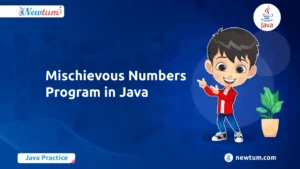If you’re just starting your coding journey with C, you’ve probably heard of the ‘C for loop’. It’s one of the most important concepts in programming! But don’t worry—it’s not as complex as it sounds. Essentially, the ‘C for loop’ lets you execute a block of code repeatedly, making it a powerful tool for tasks requiring repetition, like running through numbers or processing data in a list. Curious about how it works and why it’s so crucial? Let’s unravel the ‘C for loop’ together, and by the end of this blog, you’ll know it inside out! So, let’s dive in!
Understanding the for Loop Syntax
The for loop in C is a control flow statement used for executing a block of code multiple times. It consists of three main parts:
- Initialization – This step sets up the loop control variable. It executes only once before the loop starts.
- Condition – The loop runs as long as this condition evaluates to
true. If it becomesfalse, the loop terminates. - Increment/Decrement – Updates the loop control variable after each iteration to move towards the termination condition.
General Syntax:
for (initialization; condition; increment/decrement) {
// Loop body
}
Example:
for (int i = 1; i <= 5; i++) {
printf("%d ", i);
}
This prints 1 2 3 4 5.
How the for Loop Works
The for loop in C follows a structured flow, making it one of the most commonly used looping constructs. Below is a step-by-step execution breakdown:
Step-by-Step Execution Flow
- Initialization: The loop control variable is initialized (executed only once).
- Condition Check: Before each iteration, the condition is evaluated:
- If
true, the loop body executes. - If
false, the loop terminates.
- If
- Loop Body Execution: If the condition is
true, the statements inside the loop run. - Increment/Decrement: After executing the loop body, the loop control variable updates.
- Repeat: The condition is checked again, and steps 3–4 repeat until the condition becomes
false.
Flowchart Representation
Here’s a flowchart to visualize the process:
┌──────────────────────┐
│ Initialization │
└─────────┬────────────┘
│
▼
┌──────────────────────┐
│ Condition Check │
├─────────┬────────────┤
True │ ▼ │ False
│ Execute Loop Body │
└─────────┬────────────┘
│
▼
┌──────────────────────┐
│ Increment/Decrement │
└─────────┬────────────┘
│
▼
┌──────────────────────┐
│ Repeat Condition Check │
└──────────────────────┘
This cycle continues until the condition evaluates to false, terminating the loop.
Real-Life Applications of the C for Loop
Here’s how companies leverage the C for loop in practical scenarios:
1. Manufacturing Automation: In factories, an automated system often uses a C for loop to control repetitive tasks like assembling parts, ensuring efficiency and consistency.
2. Data Processing: Data analysts frequently employ a C for loop to process multiple data entries. This loop helps in quickly applying the same filter or transformation across thousands of entries, making their job a breeze.
3. Game Development: Game developers might use a C for loop to simulate movements or to check conditions for all game elements. It helps in keeping track of scores, levels, or even enemy movements.
4. Inventory Management Systems: Companies often use the C for loop to update or check stock levels across various products, streamlining operations.
Practical Examples of for Loop in C
1. Simple for Loop: Printing Numbers 1 to 10
A basic for loop prints numbers from 1 to 10 sequentially.
#include <stdio.h>
int main() {
for (int i = 1; i <= 10; i++) {
printf("%d ", i);
}
return 0;
}
Output:
1 2 3 4 5 6 7 8 9 10
Here, i starts at 1, increments by 1 each time (i++), and stops when i reaches 10.
2. Using for Loop for Array Traversal
A for loop is ideal for iterating through an array.
#include <stdio.h>
int main() {
int numbers[] = {10, 20, 30, 40, 50};
int size = sizeof(numbers) / sizeof(numbers[0]);
for (int i = 0; i < size; i++) {
printf("%d ", numbers[i]);
}
return 0;
}
Output:
10 20 30 40 50
Here, the loop accesses each element in the array using numbers[i].
3. Nested for Loop: Creating a Multiplication Table
A nested loop can generate a multiplication table up to 5 × 5.
#include <stdio.h>
int main() {
for (int i = 1; i <= 5; i++) {
for (int j = 1; j <= 5; j++) {
printf("%d\t", i * j);
}
printf("\n");
}
return 0;
}
Output:
1 2 3 4 5 2 4 6 8 10 3 6 9 12 15 4 8 12 16 20 5 10 15 20 25
Each row represents a number’s multiplication up to 5.
Common Mistakes and How to Avoid Them
Even experienced programmers can make mistakes while using for loops. Here are some common errors and how to avoid them:
1. Off-by-One Errors
Off-by-one errors occur when the loop runs one time more or less than intended.
Mistake: Incorrect loop condition can cause an extra iteration or miss an iteration.
#include <stdio.h>
int main() {
for (int i = 1; i <= 10; i++) { // Correct condition: i <= 10
printf("%d ", i);
}
return 0;
}
✅ Fix: Always verify whether the loop should run <= or <, and test with different values.
2. Infinite Loops Due to Incorrect Conditions
An infinite loop occurs when the terminating condition is never met.
Mistake: Forgetting to update the loop control variable.
#include <stdio.h>
int main() {
for (int i = 1; i <= 5; ) { // No increment step
printf("%d ", i);
}
return 0;
}
This will run forever since i never changes.
✅ Fix: Ensure that the loop control variable updates correctly.
for (int i = 1; i <= 5; i++) {
3. Modifying the Loop Counter Inside the Loop Body
Changing the loop counter inside the body can cause unpredictable behavior.
Mistake:
#include <stdio.h>
int main() {
for (int i = 1; i <= 5; i++) {
printf("%d ", i);
i++; // Unintended modification
}
return 0;
}
Output: 1 3 5 (skips numbers)
✅ Fix: Let the for loop control the counter. If needed, modify a different variable inside the loop instead.
By avoiding these mistakes, your for loops will work as expected and produce correct results.
Welcome to the world of instant coding with our AI-powered ‘C’ compiler! With the C online compiler, users can write, run, and test their code seamlessly. It’s quick, efficient, and powered by AI to boost your coding experience like never before. Try it and see the difference!
Advanced Usage of for Loops in C
1. Using Multiple Initialization and Increment Expressions
C allows multiple variables to be initialized and updated within a single for loop.
Example: Iterating with two variables simultaneously:
#include <stdio.h>
int main() {
for (int i = 1, j = 10; i <= 5; i++, j -= 2) {
printf("i = %d, j = %d\n", i, j);
}
return 0;
}
Output:
i = 1, j = 10 i = 2, j = 8 i = 3, j = 6 i = 4, j = 4 i = 5, j = 2
✅ Use Case: Useful when working with multiple iterators.
2. Implementing Complex Conditions
The loop condition can include multiple conditions using logical operators (&&, ||).
Example: Loop runs until either condition fails:
#include <stdio.h>
int main() {
for (int i = 1; i <= 10 && i % 3 != 0; i++) {
printf("%d ", i);
}
return 0;
}
Output:
1 2
✅ Use Case: Helps control the loop based on multiple constraints.
3. Combining for Loops with Other Control Structures
A for loop can work alongside if-else, break, and continue to control execution.
Example: Skipping even numbers using continue:
#include <stdio.h>
int main() {
for (int i = 1; i <= 10; i++) {
if (i % 2 == 0) {
continue; // Skip even numbers
}
printf("%d ", i);
}
return 0;
}
Output:
1 3 5 7 9
✅ Use Case: Useful for filtering data within loops.
Best Practices for Writing for Loops
1. Keeping the Loop Body Concise
A loop should perform a single, clear task. Avoid unnecessary operations inside it.
❌ Bad Practice:
for (int i = 0; i < 10; i++) {
printf("Processing %d\n", i);
int result = i * i; // Unnecessary computation
printf("Square: %d\n", result);
}
✅ Good Practice:
for (int i = 0; i < 10; i++) {
printf("Processing %d, Square: %d\n", i, i * i);
}
2. Ensuring the Loop Has a Clear Exit Condition
Every loop must have a termination condition to prevent infinite loops.
❌ Bad Practice:
for (int i = 1; ; i++) { // No exit condition
printf("%d ", i);
}
✅ Good Practice:
for (int i = 1; i <= 10; i++) {
printf("%d ", i);
}
3. Commenting Complex Loops for Readability
If a loop has complex logic, add comments to explain its purpose.
✅ Example:
for (int i = 1; i <= 10; i++) {
// Skip numbers that are divisible by 3
if (i % 3 == 0) {
continue;
}
printf("%d ", i);
}
Adding comments makes the code easier to understand for others (and your future self!).
By following these advanced techniques and best practices, you can write more efficient, maintainable, and bug-free for loops in C.
Conclusion
The ‘C for loop’ is a versatile tool, making repetition in coding simpler. It’s a crucial skill for efficient programming. Keep practicing, and visit Newtum for more resources. Dive deeper into coding, experiment, and watch your skills grow. Happy coding!
Edited and Compiled by
This blog was compiled and edited by @rasikadeshpande, who has over 4 years of experience in content creation. She’s passionate about helping beginners understand technical topics in a more interactive way.



